If you could answer this question honestly, have you always wanted to fly? Aerial yoga is a new form of yoga therapy that uses a silk swing or a hammock and blends conventional yoga with aerial arts. This interesting and fun form of yoga not only improves one’s flexibility and strength, but it also provides a stress relief experience and introduces one to a new level of the mind-body connection. If you are either a beginner or a seasoned yogi who is simply looking to try something more challenging, aerial yoga is the right answer for you.
What is Aerial Yoga?
Aerial yoga is a unique yoga technique that uses a fabric hammock to suspend the user in the air while they stretch their hands and legs to perform numerous poses or postures. The hammock alleviates the weight of the body and increases the stretch, the gravity-defying inversion, and also gives one a sensory experience of floating in the air. It fuses yoga, vinyasa, and acrobatics to provide a thrilling deal for both your body and mind.
The hammock serves as a prop that allows you to develop certain aspects of strength, balance, and flexibility while experiencing less stress on your joints. Aerial yoga can be practiced regardless of your fitness level, and it can be modified to accommodate each person’s abilities.
Advantages of Aerial Yoga
1. Increased Range of Motion
At the top of the list of spiritual, emotional, and psychological satisfaction a person can gain from practicing aerial yoga regularly is the improvement in flexibility. The baby steps of progressing into stretches while being assisted by the hammock make it easy to encourage movement to an increased range. Sooner or later, you will notice a boost in your flexibility levels through constant practice.
2. Enhances Muscle Tone
From the torso to the limbs, aerial yoga engages your whole body, focusing on the core, arm, and leg muscles. Forcing oneself to hold one end of the hammock while in a certain pose will use all muscles of the body, contributing to muscle building. Common postures such as inversions also utilize stabilizing muscles, engaging the entire body to move.
3. Alleviates Pressure on the Joints
Different asanas in traditional yoga may lead to strenuous stress on the joints, but with aerial yoga, you find support for your joints and spine by being suspended in the air and practicing the poses, which helps get rid of the weight. It is a great solution for people with joint pain or with limited movement.
4. Stress Relief and Mental Clarity
Suspension has an effect of calmness as if one is being rocked. The lightness of one’s body, the swaying motion can break the tension and help a person relax. The concentration needed to balance and perform the aerial postures pacifies the mind as well as keeps it occupied, rendering it to be a wonderful technique for gaining insight and attaining mental awareness.
5. Improved Circulation and Detoxification
Inversions are one of the most important types of exercises practiced in aerial yoga, which enhances circulation throughout the body as well as lymphatic flow. Such advantages may also assist in cleaning one’s system and enhancing one’s health. Furthermore, inversions improve the flow of oxygenated blood to the brain, increasing focus and energy.
Popular Aerial Yoga Poses
1. Inverted Butterfly Pose
In this pose, a person hangs upside down in a butterfly stretch with the legs spread apart. This is a very good inversion for novice users and serves to ease tension and rotate the shoulders and back.
2. Aerial Plank Pose
The aerial plank pose is very effective as it engages the core muscle groups. You simply put your feet in the hammock and then hold a plank position. This engages all muscles, especially the core muscle groups and upper body.
3. Spreading Star Pose
One of the key elements of the star pose is that it allows a practitioner to stand almost fully erect in a hammock with arms and legs completely spread apart. This position promotes body stretch for better relaxation in the pose. It also extends movement across the limb, which facilitates good body balance.
4. Savasana Straps
As you lie in the hammock and propel it to swing, aerial savasana is a very enjoyable and also very comfortable pose. The hammock surrounds you, making everything comfortable, which is why this pose serves as the ideal way to end an aerial yoga session.
Ways Through Which One Can Do Aerial Yoga
1. Select A Good Instructor
Choosing an able instructor is the first step since he or she will be able to guide you in the initial stages of aerial yoga practice and assist with alignment and injury prevention. It is safer to attend classes that are organiz in a gym that specializes in aerial aerobics.
2. Put On The Right Clothes
When engaging in an aerial yoga workout, it is more appropriate to wear skin-tight leggings and long-sleeve tops to help minimize and prevent skin abrasion that may be cause by the hammock. By wearing fitted and long-sleeve clothing, you are able to protect yourself against abrasion.
3. Be Ready to Explore
Interaction with new environments can be interesting as well as terrifying. In this case, trying to be in the air for the first time in a relatable posture can be intimidating enough. Nonetheless, allow yourself to feel free with your mind and ‘go with the flow’, and it should allow you to enjoy this experience more. Oftentimes, beginning with the more basic poses can assist one in feeling more at ease with the activity, and that is also perfectly normal.
4. Replenish On Water
As is the case with practically all types of demanding exercise, one should replenish their lost fluids owing to heavy sweating throughout the session. A well-hydrated body would always be ready for movement, be it energizing or relaxing.
Precautions to be Observed for Aerial Yoga
- Respect your Pain: One should not aim to fulfill each requirement that may be enforced by the practice or other participants. After all, it is design for fun! Take a break if you feel the urge, and do not try to work in an uncomfortable position, ever.
- Work with a Coach: If you are a beginner and trying aerial yoga exercises for the first time, then it is always worth having someone next to you to help guide you through the exercises, especially the beginner-level exercises.
- Follow the Convention: Standard aerial yoga includes essential customs and etiquette to follow during practice, such as placing an elastic strap below your chest to prevent injury or sprains while rotating your body around the arm within the hammock.
Who Can Practice Aerial Yoga?
Some people do not find aerial yoga to their liking. However, this form of exercise is appropriate for most individuals. People who have just had surgery or have chronic illnesses like vertigo or heart conditions must consult their doctors before doing aerial yoga. On the other hand, it allows the majority of the population to have fun while working on their strength, flexibility, and relaxation at the same time—a sport based on pure amusement.
Try Aerial Yoga & Get Benefits
No one can question the fact that aerial yoga is a brilliant option for those looking for a unique way to practice yoga because it is ideal for all. It encourages flexibility and strength while also providing relaxation through techniques that involve the manipulation of a hammock into various poses. If your goal is improving your physical health, reducing stress, or something else, aerial yoga is to provide a different experience that you won’t forget easily.
If aerial yoga sounds fun to you, go ahead and try it—you won’t be disappointed with this exercise as it won’t only elevate your fitness but also your spirit.







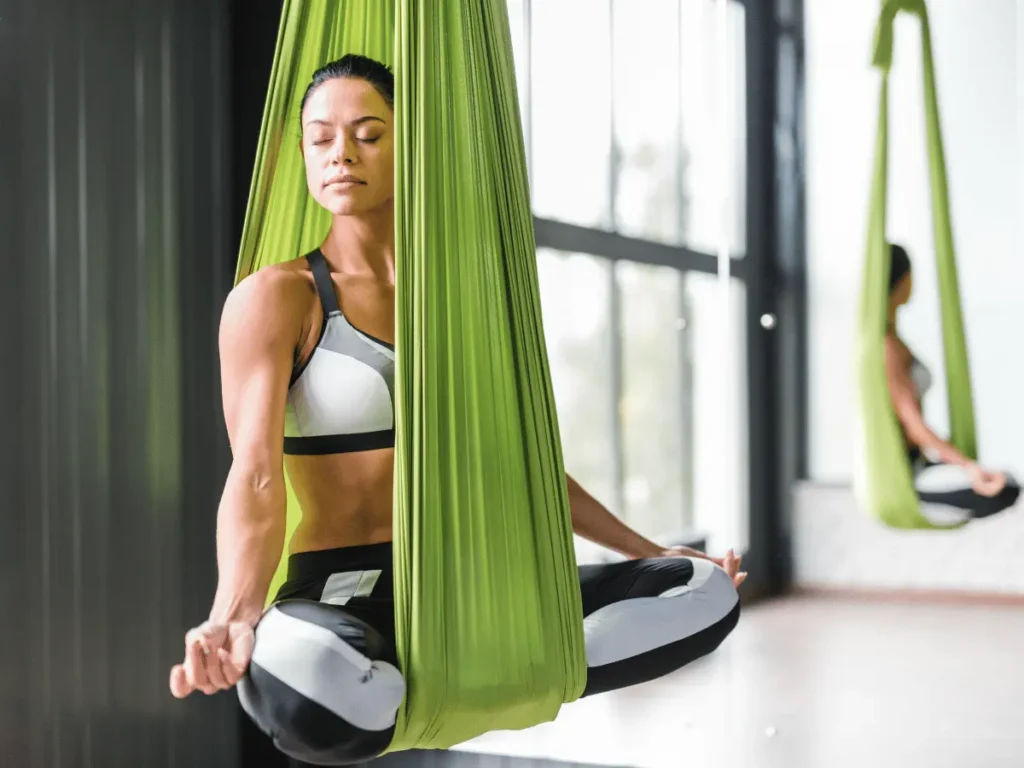
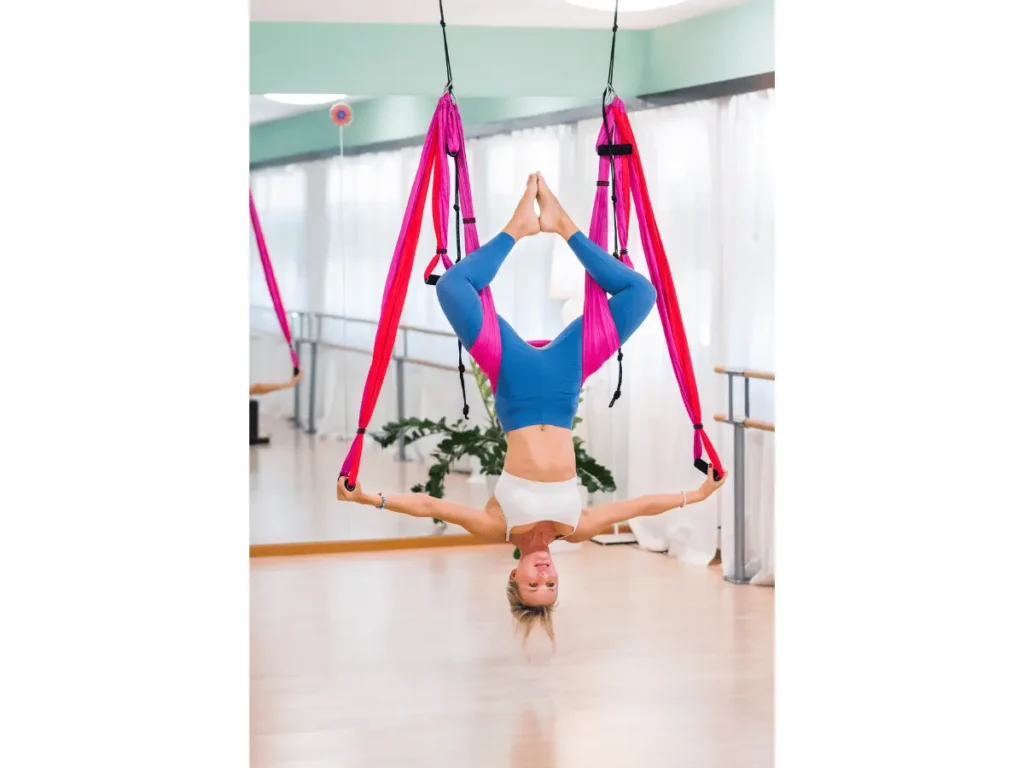

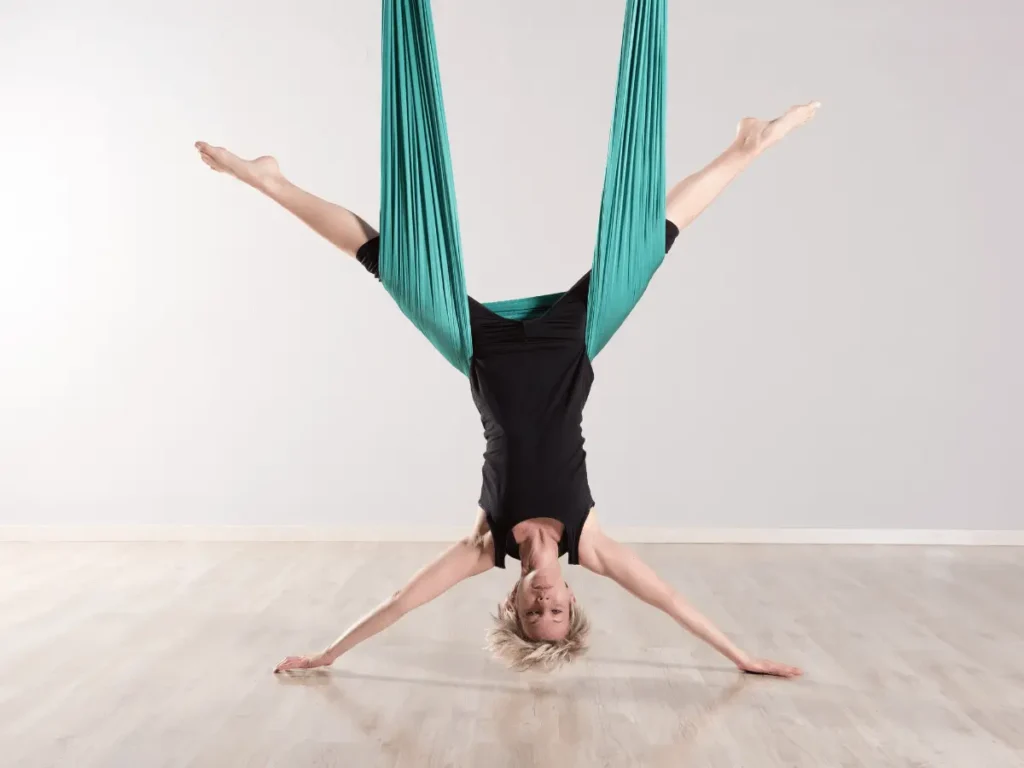

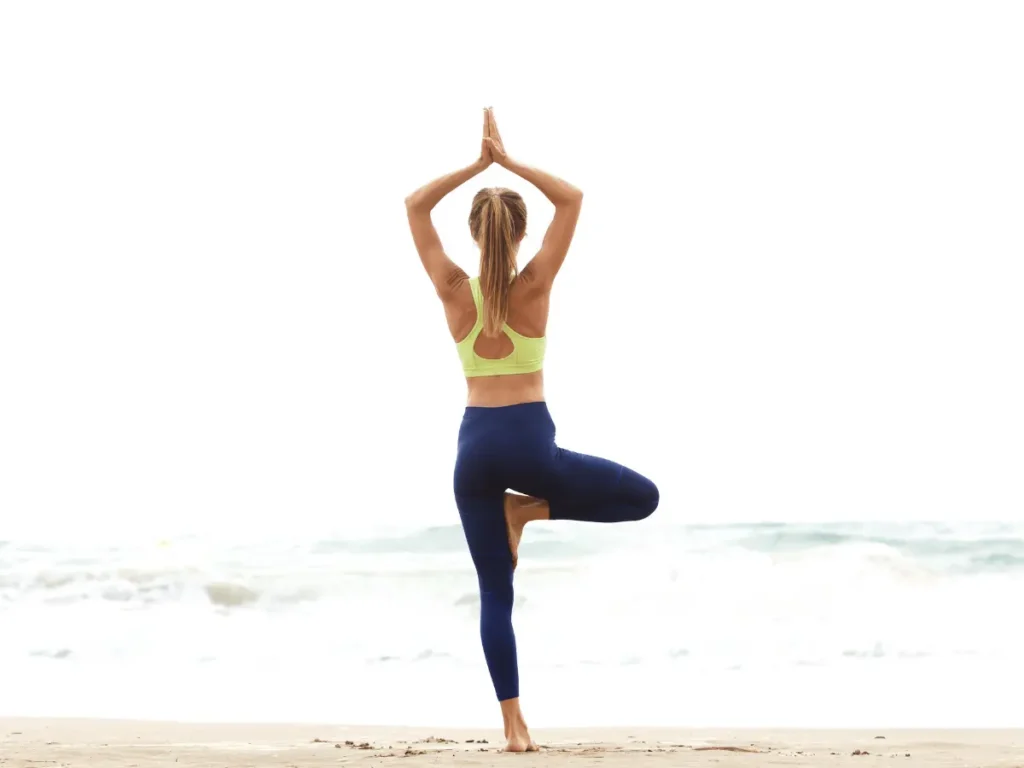





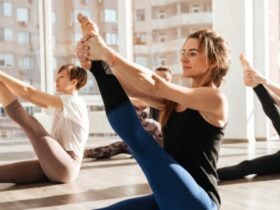

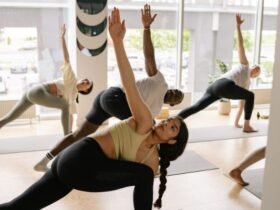
4 Comments
View Comments